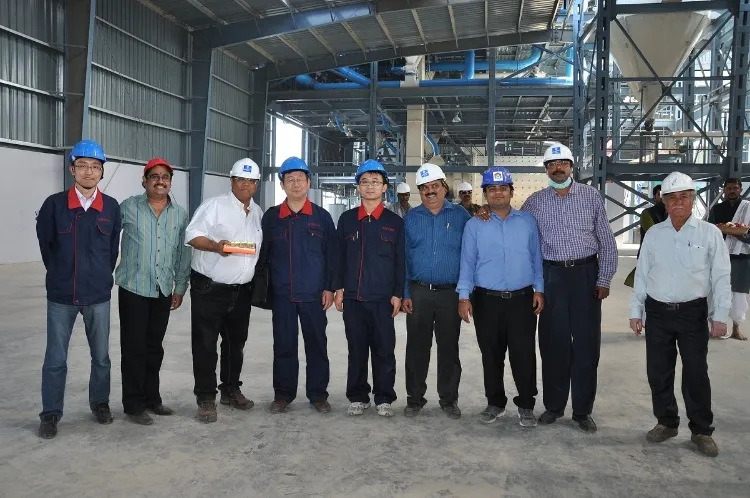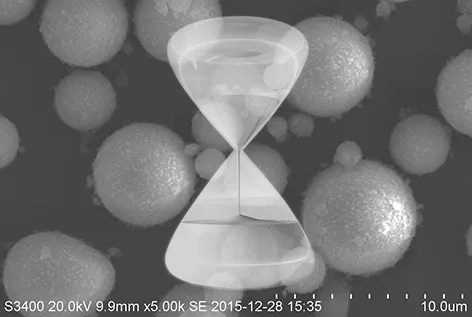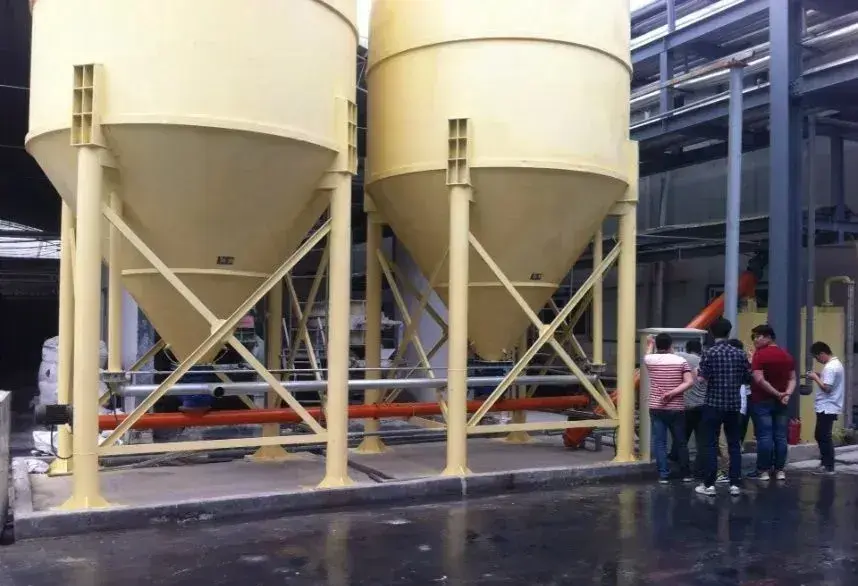Non-metallic, metal, and fuel mines are the three pillars of the materials industry. The use of non-metallic minerals depends on the level of deep processing. This includes ultra-fine grinding, ultrafine classification, fine purification, and surface modification. Effective ultra-fine grinding is essential for all these processes. The ideal ultrafine powder should have small particles, no agglomeration, and a narrow particle size distribution. It should also have spherical particles and uniform chemical composition.
Non-metallic minerals vary widely, and each has different particle size and purity requirements. These requirements depend on the specific uses of the minerals. Thus, ultrafine grinding technology must meet these unique demands. Generally, non-metallic mineral requirements include:
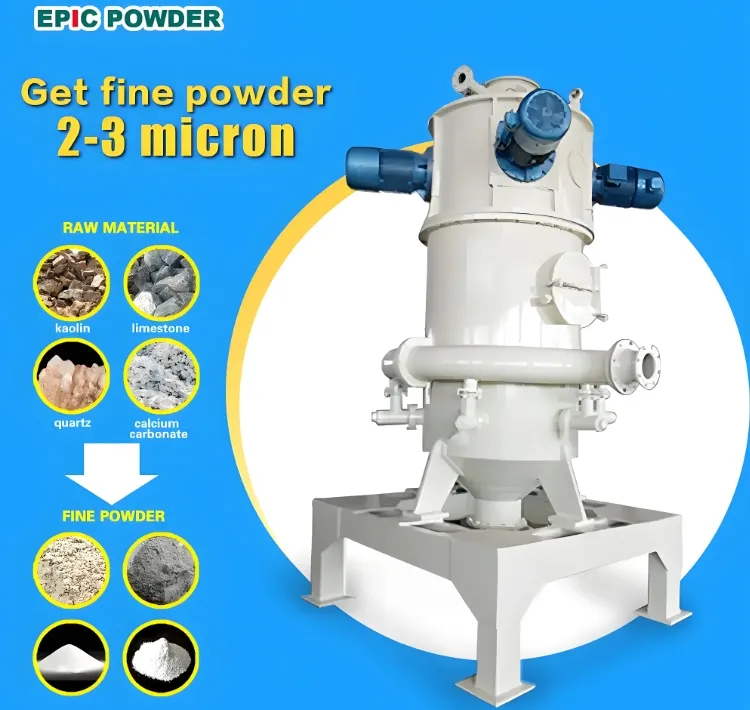
Fineness
The application of non-metallic mineral products requires specific standards. For example, kaolin and heavy calcium carbonate for papermaking require -2μm particles, 90% by weight, and whiteness >90%. High-grade paint filler heavy calcium carbonate requires a fineness of 1250 mesh. Zirconium silicate, used as a ceramic opacifier, needs an average fineness of 0.5–1μm. Wollastonite, used as a filler, requires a fineness smaller than 10μm.
Purity
Purity is a key indicator for non-metallic mineral products. This means no contamination should occur during the grinding process, and the original composition must be preserved. White minerals require a certain level of whiteness. For example, calcined kaolin and talc used in papermaking must have whiteness ≥90%. Heavy calcium carbonate used in papermaking coatings, fillers, and high-grade paints must have whiteness >90%.
Powder shape
Some non-metallic mineral products have strict shape requirements to meet specific needs. For example, wollastonite used for composite reinforcement requires its ultrafine powder to retain its needle-like crystal shape. This allows wollastonite to serve as a natural short fiber reinforcement material with an aspect ratio >8–10.
Ultrafine powder materials are applied in various fields: 40.3% in the mechanical field, 34.6% in the thermal field, and 12.9% in the electromagnetic field. They also account for 8.9% in the biomedical field, 2.4% in the optical field, and 0.9% in other areas.
Non-metallic mineral ultra-fine grinding method
Crushing differs from single-material destruction. It affects a group of particles with varying sizes and shapes.
There are two main methods for preparing ultrafine powder: chemical synthesis and physical grinding. Chemical synthesis involves chemical reactions or phase transformations, producing powder from ions, atoms, and molecules through crystal growth. However, this method is complex, costly, and has low yield, limiting its application.
Physical grinding involves grinding materials using mechanical force. Compared to chemical synthesis, physical grinding is cost-effective, simple, and produces larger quantities.
The advantages of mechanical grinding include high output, low cost, and simple processes.
Additionally, mechanochemical effects during grinding increase powder activity. However, the product’s purity, fineness, and morphology are not as good as those made by chemical methods. This method is ideal for large-scale industrial production, like deep processing of mineral products.
Non-metallic mineral ultra-fine grinding equipment
Currently, physical grinding is the main method for preparing ultrafine powder materials. Thus, ultrafine grinding equipment refers to machinery that produces ultrafine powder through mechanical methods. Common ultrafine grinding equipment includes jet mills, mechanical impact mills, vibration mills, stirring mills, colloid mills, and ball mills.
air classifier mill
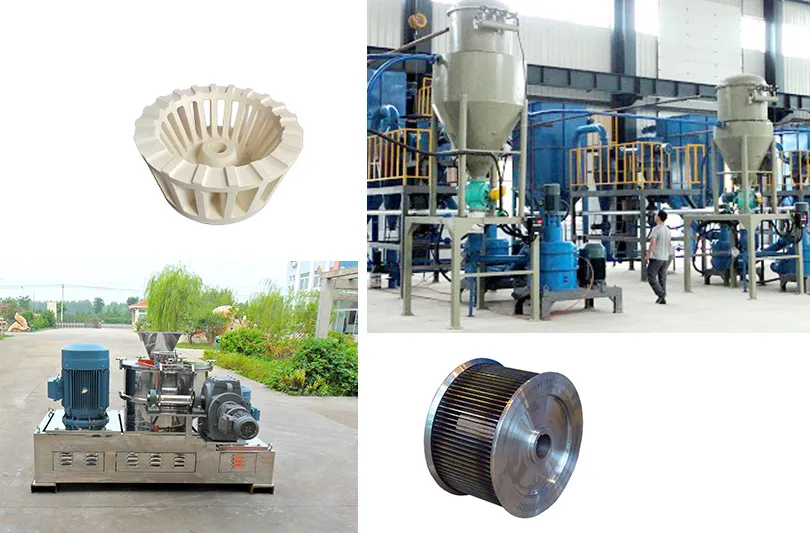
The material is uniformly sent into the grinding chamber by the feeding system, and is strongly impacted by the high-speed rotating grinding disc. At the same time, it is subjected to the centrifugal force to collide with the crushing ring gear, and is subjected to various comprehensive forces such as shearing, friction, and collision. The material is ground, and the crushed material moves to the classification area with the airflow. The coarse and fine materials are separated through the classification wheel adjusted by the frequency conversion.
- Integration of grinding and classifying, classifying wheel is adjusted to obtain ideal particle, and the classifying rotor can be installed horizontally or vertically.
- Different types of grinding disc are used based on characteristics of materials to obtain different grinding forces and improve grinding efficiency.
- Key parts are made of ceramic, ensuring non-contact with metal throughout the grinding for high purity of the final product.
- It can produce products with multiple particle sizes at one time; grinding is in closed system, low dust and noise, clean and environmentally friendly production process.
air jet mill
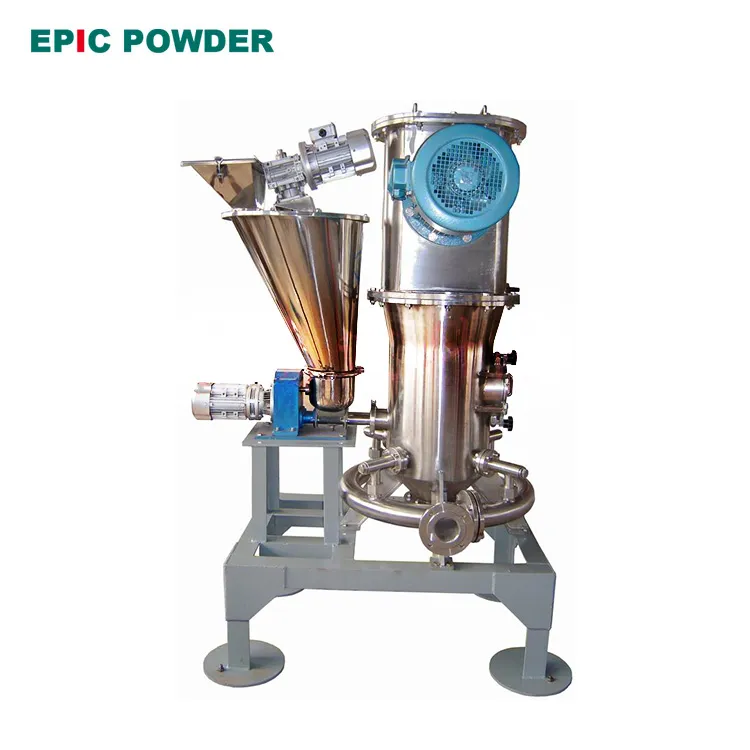
Suitable for grinding materials with high hardness, high purity and high added value. Fluidized Bed Opposed Air Jet Mill incorporates dense phase micronization using turbulent, free jets in combination with high efficiency centrifugal air classification within a common housing. This combination allows for enhanced comminution by high probability particle-on-particle impact for breakage and a high degree of particle dispersion for improved separation.
- Low-temperature pulverization without medium, especially suitable for heat-sensitive, low-melting materials.
- Control particle sizes precisely, available particle size D50:1~25μm.
- Grinding in a complete closed system, no dust, low noise, clean and environmentally friendly.
- Jet Milling is an effficient way to mill or micronize various chemicals, polymers, ceramics and other friable materials. Abrasive and temperature-sensitive products can be finely ground with minimum contamination. The simple, easy-to-clean, cost-effective design offers precise top size control with narrow size distributions in the 95% < 5 um to 95% < 70 um size range. Load cells are used to precisely control mill load for optimum grinding efficiency and/or product size distribution control.
pin mill
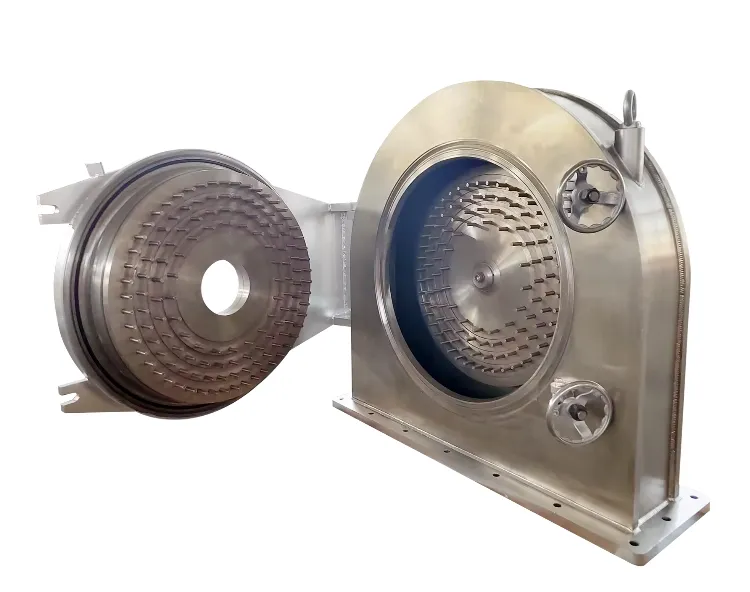
Widely used in chemical, inorganic salt, medicine, food, pigments, dyes, pesticides, battery materials, minerals, refractory materials and other industries.
The pin mill also categorized as a disc mill is a kind of milling equipment that can break up cellular materials selectively without damaging the starch granules. It consists of two horizontal steel plates with vertical projections arranged in concentric circles on opposing faces and becomes more closely spaced towards the periphery.
- It achieves smaller particle size than hammer mill at relatively reasonable energy consumption.
- Recent advances have improved heat removal from the mill using cryogenic conditions.
- Pin mill occupies little floor space.
- It has a wide range of applications; can be used in milling dry, moist or slurry materials.
- The two needle discs in the mill rotate at high speed in opposite directions;
- The fineness of the product is achieved by adjusting the speed of the dial;
- The machine is easy to clean, just open the grinding door;
- No sieve, smooth discharge, high capacity and low operation cost; dual power can be used to achieve a linear speed above 200m/s to obtain greater crushing power.
turbo mill
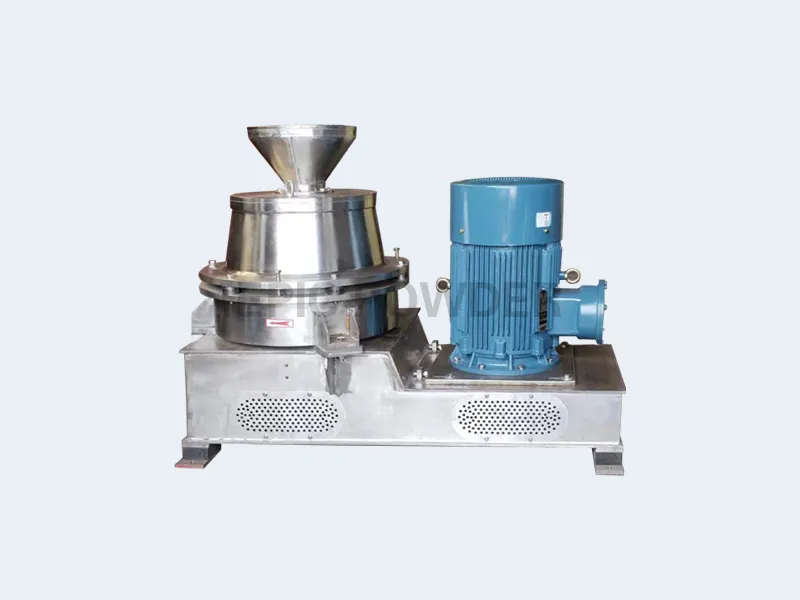
Turbo Mill is different from other kinds of grinders. Raw materials will be ground via the force of cutting, impact, innumerable high speed vortex and high frequency vibratory. Not only the raw materials with tough flexibility and high fiber, but also high heat-sensitivity can be ground completely.
- Simple and solid design with no internal screens makes maintenance easy and promises nearly permanent and trouble-free operation.
- Easy to open upper casing makes cleaning, maintenance and inspection simple.
- The height and the installation area relative to throughput is less than other machines.
- Fineness: 50 ~ 2500Mesh. (data is for reference only & may vary according to raw material)
conclusion
In conclusion, ultrafine grinding of non-metallic minerals plays a crucial role in enhancing material properties and expanding their applications. By refining particle size and improving consistency, it enables better performance in various industries, from coatings to ceramics. Continued advancements in grinding technology will further optimize production efficiency and material quality.
epic powder
Epic Powder, 20+ years of work experience in the ultrafine powder industry. Actively promote the future development of ultra-fine powder, focusing on crushing,grinding,classifying and modification process of ultra-fine powder. Contact us for a free consultation and customized solutions! Our expert team is dedicated to providing high-quality products and services to maximize the value of your powder processing. Epic Powder—Your Trusted Powder Processing Expert !
